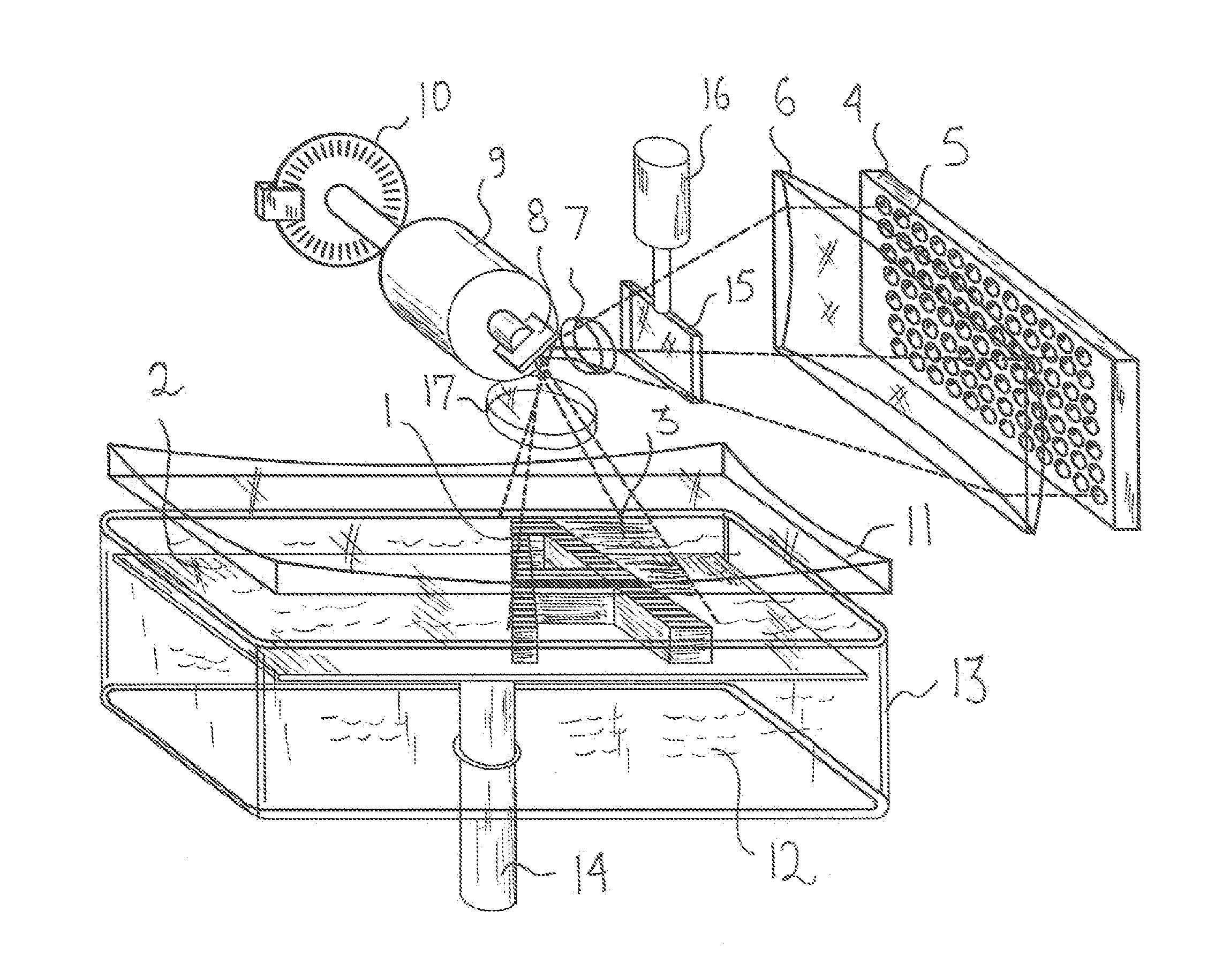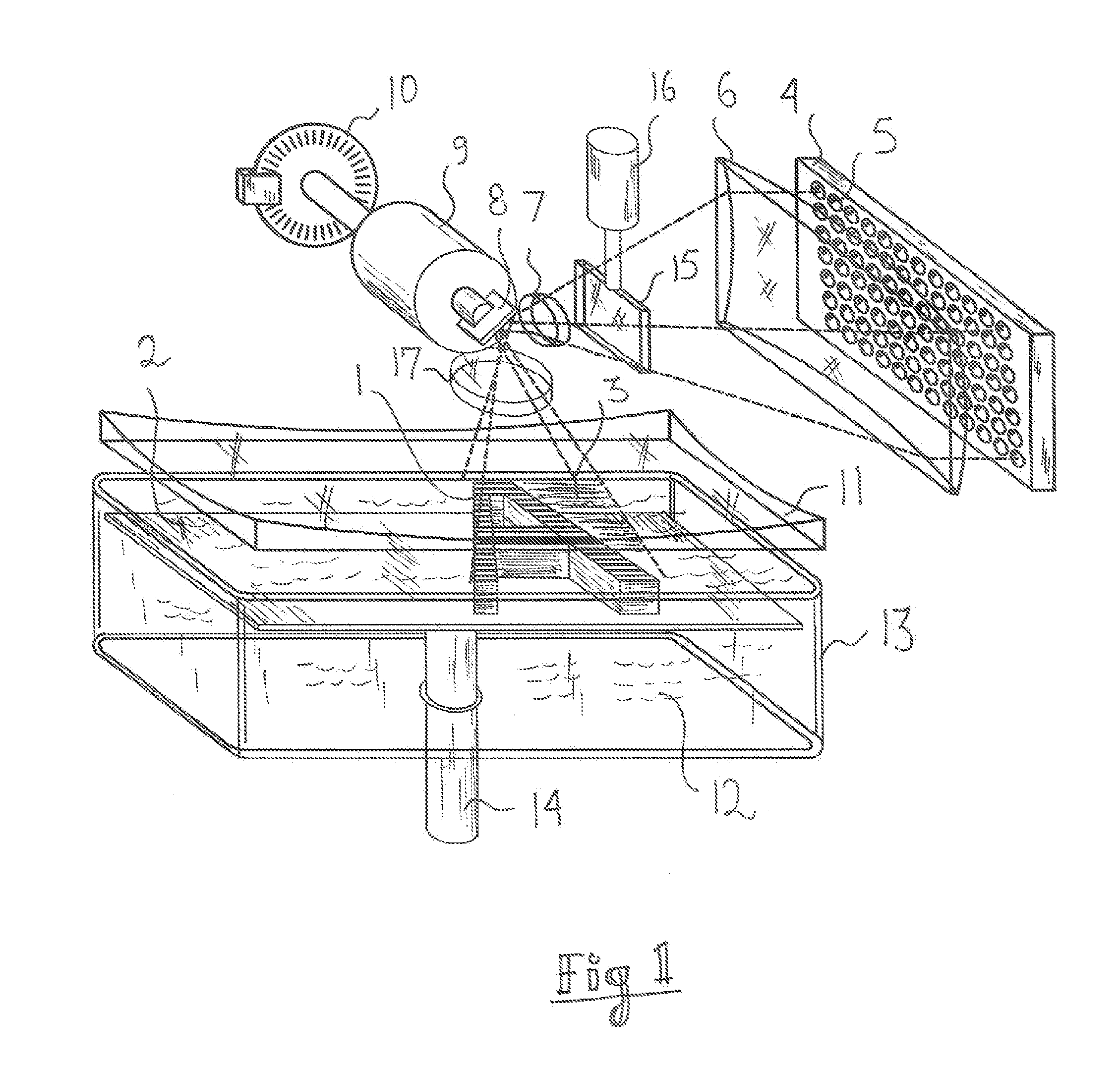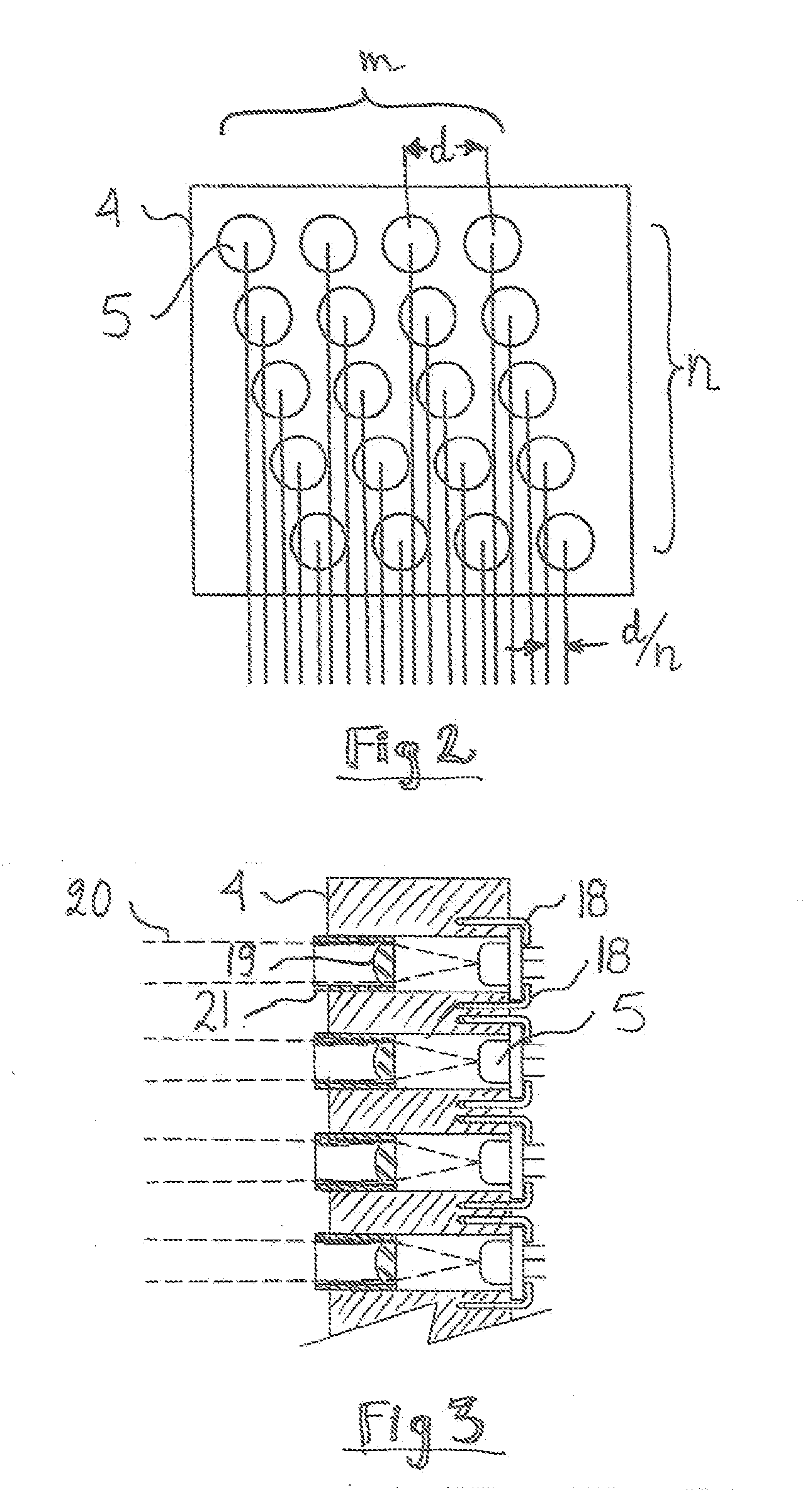Laser Diode Array Based Photopolymer Exposure System
a photopolymer and laser diode technology, applied in the field of 3d printing, can solve the problems of low power of low-power laser diodes, limiting factors in this process, high-power uv lasers are expensive, etc., and achieve the effects of simplified optical design, reduced cost and simplified optical design
- Summary
- Abstract
- Description
- Claims
- Application Information
AI Technical Summary
Benefits of technology
Problems solved by technology
Method used
Image
Examples
Embodiment Construction
[0014]In order to make an efficient use of the optical field-of-view of the scanning system, a two dimensional array of single mode laser diodes is used as a multi-beam source for image-wise exposing the surface of the liquid photopolymer. The principle of such an array is disclosed in U.S. Pat. No. 4,743,091, hereby incorporated by reference. The principle is also shown in FIG. 2. An array 4 has a 2D array of laser diodes 5. Since each row is shifted relative to the previous one, an array having m columns and n rows will create m×n equally spaced lines when scanned. Furthermore, if the pitch of the laser diodes is d the line spacing will be d / n. This reduces the need for a strong optical image reduction as the actual pitch of the lines in stereolithographe is in typically in the range of 25 um to 250 um. The best utilization of the optics is when m=n, however other ratios can be chosen to maximize throughput. An illustrative example will be described for a system having a resolutio...
PUM
| Property | Measurement | Unit |
|---|---|---|
| wavelength | aaaaa | aaaaa |
| wavelength | aaaaa | aaaaa |
| wavelength | aaaaa | aaaaa |
Abstract
Description
Claims
Application Information
 Login to View More
Login to View More - R&D
- Intellectual Property
- Life Sciences
- Materials
- Tech Scout
- Unparalleled Data Quality
- Higher Quality Content
- 60% Fewer Hallucinations
Browse by: Latest US Patents, China's latest patents, Technical Efficacy Thesaurus, Application Domain, Technology Topic, Popular Technical Reports.
© 2025 PatSnap. All rights reserved.Legal|Privacy policy|Modern Slavery Act Transparency Statement|Sitemap|About US| Contact US: help@patsnap.com



